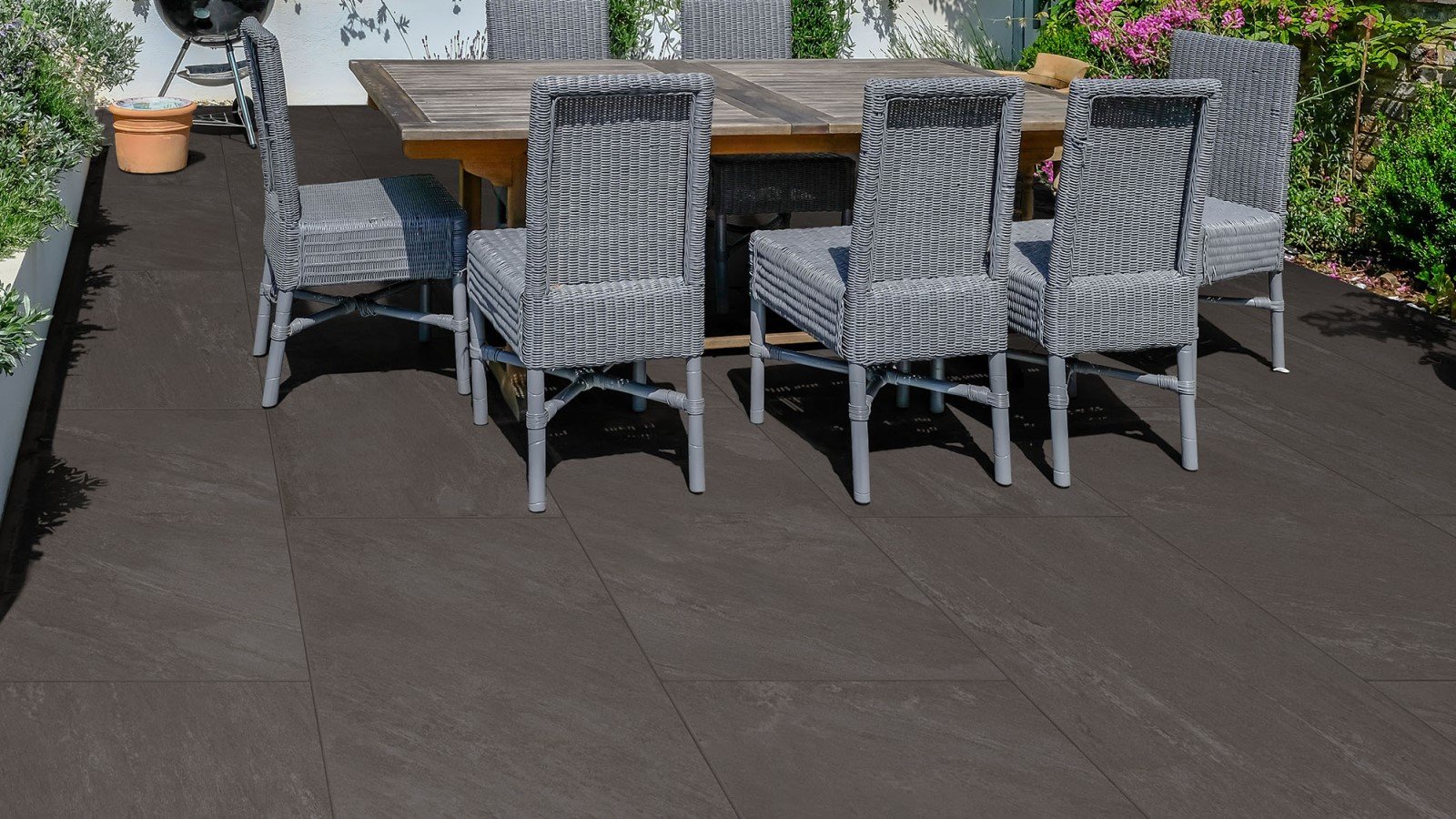Skimming through a paving how-guide but not 100% clear on the terminology?
Don’t worry, you won’t need to wing it. Rather than ignoring the relevance of ‘fall’, skipping the ‘screeding’ segment and installing a flimsy ‘sub-base’, we’ve pulled together this glossary that tackles the trickiest of industry terms.
Continue reading, below, to become fluent in the lingo of landscapers.
Aggregate
Typically used to create a stable sub-base for paving slabs, aggregate is a collection of granular materials, such as sand, gravel or crushed stone.
Aspect ratio
A paver’s aspect ratio refers to the overall length of the slab, divided by its thickness. This measurement is used to determine suitability for high traffic areas.
Backfill
Any material used to refill an excavated hole or trench is known as a backfill. It’s used to both strengthen a structure’s foundation and promote efficient water drainage.
Blinding
Used to seal and protect the underlying materials, blinding is the process of pouring a thin layer of concrete over paving foundations.
Course
For when you’re building a garden wall, a course is a layer of blocks running horizontally on the same level.
Edging
Great for defining flower beds, partitioning gardens and keeping paving slabs in place, laying edging grants a stylish border for gardens and paved driveways.
Fall
Also referred to as gradient, fall is a measurement used to help paving drain more effectively. You can achieve fall by installing paving slabs (or drainage pipes) at a slope. How sharp the incline is will depend on the fall ratio in your laying instructions.
Free edge
The free edge of a paving slab is the side that is free of mortar.
Haunching
Haunching refers to the process of placing concrete supports at the sides of a drainage pipe or paving trench, helping to keep it secure on an angle.
Joint
Also known as recesses, these are the gaps between paving slabs or walling blocks. Fill joints with mortar to secure adjacent paving slabs or blocks together.
Mortar
Integral to nearly every DIY paving project, mortar is a binding material which usually a mixture of cement, sharp sand and water. Find out how to mix your own mortar here.
Paving slabs and block paving
Commonly used for patios and garden paths, paving slabs are large paving stones, while block paving refers to individual bricks – a popular choice for driveways.
Permeable paving
Permeable paving allows rainwater to be filtered naturally into the sub-base, rather than running off into public drainage systems. If you’re laying a driveway, permeable paving could be a legal requirement.
Retaining wall
A retaining wall is any structure that holds or retains soil behind it; an important pre-requisite for raised flowerbeds.
Riven and sawn paving slabs
Riven paving slabs are those with uneven surfaces, giving them a more natural look. This is not to be confused with sawn paving, which refers to any slab accurately cut (or sawn) by a machine, resulting in clean, uniform lines.
Screeding
Ideal for when you’re building paving foundations, screeding is when you install a level bedding layer, ready for laying paving slabs or blocks.
Sealant
Sealant is a substance usually laid over paving slabs and pattern concrete to help protect from stains, weeds and UV colour degradation.
Setts
Also known as a “Belgian block”, a paving sett is a small block of quarried stone. They are typically made with durable materials, making them perfect for heavy traffic driveways.
Sharp sand and building sand
Sharp sand creates a stronger bond and is typically used in mortar mixes that secure paving slabs to a sub-base, whereas building sand is more malleable, making it perfect for joint mortar.
Stiff on stiff
A rule of thumb for laying paving, stiff on stiff refers to the type of joint and bed mortar that you use for your paving slabs; if you use a stiff bed then you should also have stiff joints.
Sub-base
A sub-base forms the foundation for paving slabs. They are the most crucial element in laying paving. Without a solid sub-base, paving slabs are likely to come loose or crack.
Tamping/compacting
To ensure your paving foundations are level, you need to tamp (or compact) the surface with a tamping tool, pushing out air pockets and compressing the surface soil together.
Now you’re fluent in the language of DIY paving, it’s time to put that knowledge to good use. Start your project today by browsing Simply Paving’s extensive range of paving slab products, or get in touch with a member of our team on 0800 032 6306 or start a live chat.










































